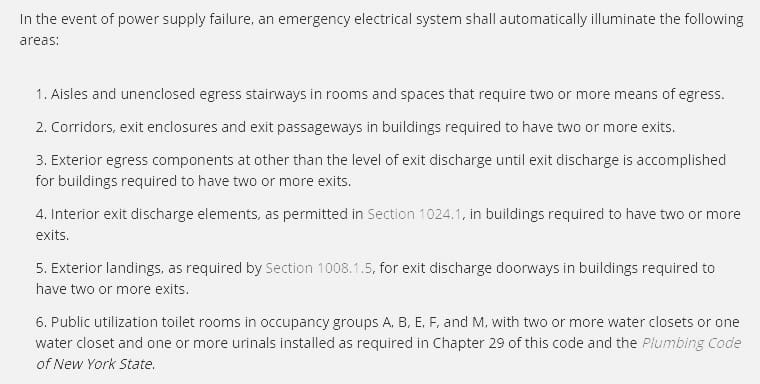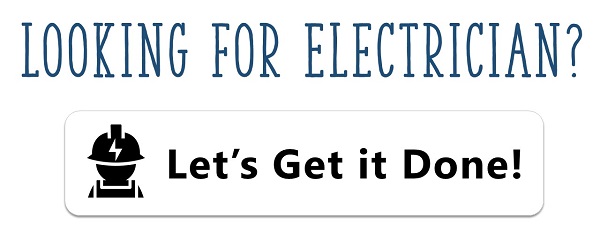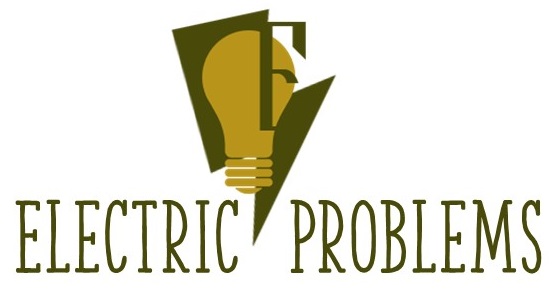Emergency Lighting UPS Power Supply
DISCLAIMER: AS AN AMAZON ASSOCIATE I EARN FROM QUALIFYING PURCHASES. THIS POST CONTAINS AFFILIATE LINKS THAT WILL REWARD ME MONETARILY OR OTHERWISE WHEN YOU USE THEM TO MAKE QUALIFYING PURCHASES. FOR MORE INFORMATION, PLEASE READ MY EARNINGS DISCLAIMER.
|
Uninterruptible power supply emergency lighting is important due to requirements and regulations that ensure public safety in commercial places. Not to mention you probably want your facility to be safe and secure in the event of power failure.
The quality of power supplies is also controlled by regulations and in the event of a power failure, your backup power supply system needs to be able to perform certain tasks in order to comply. There are many UPS lighting solutions out there and what is the quickest way to find out about the product quality if you don’t have personal experience?
Certifications!
Following are some companies that have product compliance certifications and offer “off the shelf” UPS emergency lighting solutions (or inverter emergency lighting):
- Toshiba. Centralized LED-compatible emergency lighting system. UL 924 Certified. Website >>
- Big Beam. Single-phase and tree phase lighting inverters (with batteries) and emergency lighting mini UPS system. UL 924 Certified. Website >>
- Eaton. 10-200 kVA emergency lighting UPSs. UL 924 Certified. Website >>
- Controlled Power Company. LED-compatible centralized emergency lighting inverters. 550W – 18kW single phase lighting inverters and 10kW – 55kW three-phase models. UL 924 Certified. Website >>
Let’s take a look at the Toshiba EL924 Series (UPS Power System for Emergency Lighting Applications):
![]()
Lighting inverter or UPS?
You probably noticed that many companies offer an inverter system and not UPS. Why? Because when the lighting inverter system provides continuous filtered power for your backup lighting and it has batteries, now it is called – emergency lighting UPS (Uninterrupted Power Supply)!
There are many types of emergency lighting inverters out there and some of them provide exactly the same features as UPS. The only difference is that power outage response time in the inverter is greater than it is in UPS, but it is usually in milliseconds.
But there are also inverters that offer double conversion and no power interruption whatsoever. Emergency lighting inverters like that could be used for HID (High-Intensity Discharge) lamps, lighting control systems, and alarm circuits.
Both UPS and online inverter systems will keep your lighting fixtures protected from power surges while giving you a proper lighting level during brownouts and voltage drops. Here is a good example from IOTA on different inverter system types:
![]()
There are two types of installation for lighting inverters:
- Central lighting. This is a centralized lighting solution that is designed to minimize maintenance and optimize emergency lighting performance. This type of emergency lighting setup can power all exiting emergency lighting fixtures from one place and be tested for their functionality without any trouble.
- Dispersed lighting. This type of emergency lighting requires every fixture to have its own battery. Lower initial cost, but high maintenance cost with tons of headache since every individual battery will need to be checked and tested for compliance.
What else you need to consider before choosing an emergency backup lighting system that is right for you?
- Types of light bulbs you have. If you need to power LED lights, you will need a system that is specifically designed to handle high inrush current, which is common for LED loads.
- Type of technology you need. UPS power supplies and double conversion online inverter system will both give you uninterruptible performance during an emergency blackout.
- How much power you need. There is a big variety of how much power UPS and inverter systems can provide you with. While you are calculating your power needs, don’t forget to check compliance regulations in order to determine which areas require illumination.
- How much run time you need. Most UPS and inverter emergency lighting systems are designed to achieve a full light output for about 90 minutes (which are required by the standard). If you think you will need a longer time on the same battery, you can always decrease the load.
- How much space you have. The good news is that emergency lighting backup systems like (UPS and inverters) don’t take much space and can even be attached to the ceiling! If you are thinking of using a generator as well, you will need to find a nice big ventilated area (generally outside) and away from people (it smells).
Now, let’s take a look at what is inside of the emergency lighting power supply unit:
UPS and inverter UL compliance
Both UPS and inverters need to be UL 924 (Safety of Emergency Lighting and Power Equipment) compliant. This standard is the addition to other standards, such as:
- UL 1778 (Uninterruptible Power Systems),
- UL 1008 (Transfer Switch Equipment),
- UL 1994 (Luminous Egress Path Marking Systems)
- UL 48 (Electric Signs)
- UL 1598 (Luminaires)
1.1 This Standard applies to emergency lighting and power equipment for use in unclassified locations and intended for connection to branch circuits of 600 volts or less.
Such equipment is intended to automatically supply illumination or power or both to critical areas and equipment in the event of failure of the normal supply, in accordance with Article 700 or 701 of the National Electrical Code, NFPA 70, the Life Safety Code, NFPA 101, the Fire Code, NFPA 1, the International Building Code, IBC, and the International Fire Code, IFC.
UPS specific UL standard is – UL 1778 (Uninterruptible Power Systems).
This Standard is applicable to movable, stationary, fixed, and built-in UPS for distribution systems up to 600 V a.c.
This equipment is designed to be installed in accordance with the Canadian Electrical Code, Part I, CSA C22.1, or the National Electrical Code, ANSI/NFPA 70, and, unless otherwise identified, the Standard for the Protection of Electronic Computer Data-Processing Equipment, ANSI/NFPA 75.
Emergency lighting standards and requirements
It is not only useful but is a mandatory requirement to have power backup for your lights in case of an emergency.
National Fire Protection Association (NFPA) issued a series of standards in order to provide a safe and hazard-free environment for all of us. Here are some examples related to emergency lighting standards:
- International Building Code (IBC).
- NFPA 101 (Life Safety Code).
- NFPA 70 (National Electrical Code).
- NFPA 110 (Standard for Emergency and Standby Power Systems). Requirements on the performance of alternate source power systems in a standby and emergency mode.
- NFPA 111 (Standard on Stored Electrical Energy Emergency and Standby Power Systems). Standard on supplying continuous emergency power by a stored energy system like UPS (Uninterruptible Power Supply) in buildings and facilities, where the loss of power is simply unacceptable.
International Building Code (IBC)
Emergency lighting needs to be in proper working order when the power goes down. If you don’t have a power backup system in place, your building or facility will not be compliant and you may not receive appropriate permits.
IBC Section 1006.1 Illumination Required
The means of egress, including the exit discharge, shall be illuminated at all times the building space served by the means of egress is occupied.
IBC Section 1006.2 Illumination Level
The means of egress illumination level shall not be less than 1 foot-candle (11 lux) at the walking surface level.
IBC Section 1006.3 Illumination Emergency Power
The emergency power system shall provide power for a duration of not less than 90 minutes and shall consist of storage batteries, unit equipment or an on-site generator. The installation of the emergency power system shall be in accordance with Section 2702 of the Building Code of New York State.
Even though it’s an architect’s job to determine where exit paths will be, it is the job of the engineer to illuminate them. These emergency lighting plans will need to be also approved by AHJ (Authority Having Jurisdiction) who will be issuing you a building occupancy permit.
Following areas require illumination according to IBC Section 1006.3:

NFPA 101 (Life Safety Code)
This code (along with many others), was created by the National Fire Protection Association (NFPA) in order to prevent injuries, death, property loss due to fire and electrical hazards.
Here are some excerpts from Life Safety Code 2003:
7.9.2.1* Emergency illumination shall be provided for not less than 1-1/2 hours in the event of failure of normal lighting.
Emergency lighting facilities shall be arranged to provide initial illumination that is not less than an average of 10.8 lux (1 ft.-candle) and, at any point , not less than 1.1 lux (0.1 ft.-candle), measured along the path of egress at floor level.
Illumination levels shall be permitted to decline to not less than an average of 6.5 lux (0.6 ft.-candle) and, at any point, not less then 6.5 lux (0.06 ft.-candle) at the end of the 1-1/2 hours.
A maximum-to-minimum illumination uniformity ratio of 40 to 1 shall not be exceeded.
7.9.2.2* The emergency lighting system shall be arranged to provide the required illumination automatically in the event of any interruption of normal lighting due to any of the following: (1) Failure of a public utility or other outside electrical power supply. (2) Opening of a circuit breaker or fuse.(3) Manual act(s), including accidental opening of a switch controlling normal lighting facilities.
7.9.2.4* Battery-operated emergency lights shall use only reliable types of rechargeable batteries provided with suitable facilities for maintaining them in properly charged condition. Batteries used in such lights or units shall be approved for their intended use and shall comply with NFPA 70, National Electrical Code®.
7.9.2.5 The emergency lighting system shall be either continuously in operation or shall be capable of repeated automatic operation without manual intervention.
More excerpts from NFPA 101 Life Safety code >>

Click on the white button above to find your electrician!



